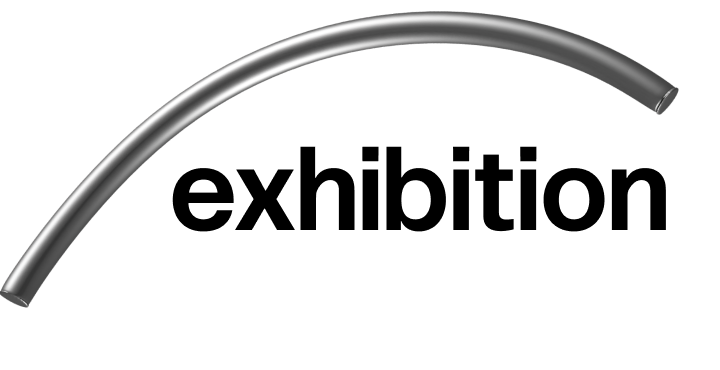DE NE DE
The self-organized artistic initiative DE NE DE unites artists, musicians, architects and historians around the idea of preserving an obscure and non-obvious cultural heritage. DE NE DE explores cultural change caused by ideological shifts, particularly the processes of decolonization and decommunization. Participants: Marta Bilas, Alex Bykov, Dana Brezhneva, Natalka Diachenko, Danylo Halkin, Liza Evseeva, Tetiana Evseeva, Zhanna Kadyrova, Liubov Malikova, Leonid Maruschak, Zhenia Moliar, Max Poberezhskyi, Denis Ruban, Alina Yakubenko The history of the Soviet period has always been a very complex and emotionally tense topic for Ukrainians. Not least because it was and is the subject of constant manipulation and speculation by Kremlin propaganda, particularly since the annexation of Crimea, the beginning of the Russian military intervention in 2014, and especially after the full-scale war in 2022. Russian propaganda has specifically claimed the Soviets as Russian. As a result, the Soviet is no longer perceived as the Ukrainian past but mostly as the Russian present. This leads to growing intolerance and hatred toward this heritage in society. Due to such manipulations, Ukrainians are ready to get rid of the cultural heritage of the complex, colonial past. But it is the past of a country that, even in the totalitarian decades, not only preserved its subjectivity, traditions, culture, and language but also created a unique Ukrainian Soviet cultural phenomenon. Unfortunately, it is now disappearing rapidly. The comprehension and preservation of the Ukrainian Soviet cultural heritage is mainly the responsibility of grassroots activist initiatives, independent researchers, and artists. Official institutions and authorities usually try to avoid this topic, preferring to practice prohibitions and demolitions. We show selected relevant initiatives, when and how they appeared in the time period: - Nova Kakhovka Society for the Cultural Heritage - Protection - Soshenko 33 - Yevhen Nikiforov - Soviet Mosaics in Ukraine - Semen Shyrochyn - Yakiv Novytskyi Zaporizhzhia Scientific Society - Kherson Modernism - Save Kyiv Modernism - Silmahia - "Socialist Realism. Seeming to Be Another" research and artistic seminar by Method Fund - Ua Monumental Art - Chernihiv Monumentalism - projekt “Kintseva” - Save Kvity Ukrainy - Pro Mosaic Art - Dnipro Monumentalism. We also show a number of objects representing various and multiscale cultural heritage sites that we work with. The subject of our work can be a single object, a building, a city, or an entire region. In this way, we try to show the complex process of working with heritage in time and space.

DE NE DE
2022,
Multi-part installation
The multipart installation includes an investigation into the Donbas region’s cultural landscape; an attempt to revitalize plans for greening Nova Kakhovka, a historic “garden city”; explorations of architectural sites such as Rusanivski Gardens in Kyiv and its dacha housing; and the experimental art ceramics laboratory erected in Kyiv in 1946. Finally, artifacts from Salute, a landmark cinema in Dnipro (opened in 1976), are also displayed, as well as a series of engravings on historical furniture that draw attention to Ukraine’s Soviet past and its impact on the present.


neue Gesellschaft für bildende Kunst (nGbK), station urbaner kulturen/nGbK Hellersdorf, Between Bridges, Prater Galerie
February 23–June 9
Kyiv Perennial
Nova Kakhovka— the Garden City (Liza Evseeva, Tetiana Evseeva, Liubov Malikova)
,
print, printed coat
Stefan Faldzynskyi was a gardener who worked on the landscaping of Nova Kakhovka in the 1950s. He envisioned a wide park line along the shore. Already in the early 2000s, business representatives tried to build up the park with commercial development. For many years, local activists led by Tetiana Yevseyeva fought to preserve the park. In February 2022, the Russian occupiers seized the town of Nova Kakhovka. In the summer of 2023, the Russian army blew up the Kakhovka dam, flooding hundreds of settlements down the Dnipro. Some of them were simply swept away by a powerful stream of water. A wide park area on the banks of Nova Kakhovka protected the city from terrible destruction. It rose gradually, as it was held back by dense greenery. Now the park is being cut down by the Russian occupiers Liubov Malikova produced clothes by the DIS/ORDER brand depicting plans for the greening of Nova Kakhovka, following the common activist practice of popularizing cultural heritage sites.


neue Gesellschaft für bildende Kunst (nGbK), station urbaner kulturen/nGbK Hellersdorf, Between Bridges, Prater Galerie
February 23–June 9
Kyiv Perennial
Rusanivsky gardens (Denis Ruban & Zhanna Kadyrova)
,
video
The phenomenon of dacha massifs An interesting urban planning phenomenon of the Soviet era was the dacha housing area. Free from construction, the territories within the city or near it were given to enterprises, organizations, factories, and institutes that created garden associations on them. One of the most striking examples of planned suburban development is Rusanivsky Gardens in Kyiv. In 2019, artist Zhana Kadyrova initiated the creation of the Rusaniv Gardens Museum to preserve its unique history. Small dacha houses were designed in the 1950s on high legs, with the expectation that the water in the Dnipro would rise every spring. After the construction of the dam in the 1970s, the annual floods stopped. In the post-Soviet era, when the dacha plots became private, the high-footed houses were rebuilt into ordinary ones. The integral authentic appearance of the neighborhood changed beyond recognition. For two years, the Russian army's attacks have been causing devastating damage to the infrastructure of Ukrainian cities and changing natural ecosystems. Therefore the experience of building in flood zones became relevant again.


neue Gesellschaft für bildende Kunst (nGbK), station urbaner kulturen/nGbK Hellersdorf, Between Bridges, Prater Galerie
February 23–June 9
Kyiv Perennial
Experimental laboratory of architectural ceramics (Hanna Sharay)
,
ceramic tiles
The experimental laboratory of architectural ceramics of the Academy of Architecture of the Ukrainian SSR was created in 1946 for the post-war reconstruction of Kyiv after WWII. Its creation was initiated by the President of the Academy, architect Volodymyr Zabolotny and art critic and artist Panteleimon Musienko. The team was headed by the chemist-engineer and artist Nina Fedorova. Therefore, the laboratory was usually called "Nina Fedorova's Workshop". Special attention was paid to the combination of academical art and folk art, industrialization of ceramic production, which was inherent in Fedorova's workshop. This small laboratory was able to create such a large-scale artistic phenomenon that shaped the visual texture of Kyiv in the second half of the 20th century and had a significant impact on the whole of Ukraine. Special attention was paid to work with decorative tiles used to cover the surfaces of the building walls. For the first time, the Laboratory began to develop variants of modular tiles, which, when combined from any side, created various ornamental patterns. Hanna Sharai was mainly engaged in this.She created textured modules with low reliefs. These tiles were used to decorate the lobbies of the Kyiv subway. In 2021, during the renovation of one of the stations, Hanna Sharay's original variant tiles were knocked down and replaced with ordinary mass market ceramic tiles. The participants of DE NE DE managed to find and save some of the tiles.


neue Gesellschaft für bildende Kunst (nGbK), station urbaner kulturen/nGbK Hellersdorf, Between Bridges, Prater Galerie
February 23–June 9
Kyiv Perennial
"Salute" (Danylo Halkin)
,
chandelier from the Salute hotel, chief architect Petrov O.B.
In the spring of 1976, on the occasion of the 200th anniversary of Dnipro, the Salute cinema with an 800-seat auditorium was opened, which immediately became the main cultural center of the Peremoha neighborhood. In 1983, a group of architects was awarded the State Prize of the Ukrainian SSR in Architecture for its creation, and the residential area was included in the list of architectural monuments of union significance. The cinema lobby was decorated with a 5x5x3 meter chandelier made of 1,600 elements in the form of a firework shot-a brilliant example of Soviet industrial design. Thanks to such elements, typical architecture acquired originality and uniqueness. A few years ago, the unique complex was destroyed to build a high-rise building. The artist Danylo Galkin preserved parts of the original interior, including the unique majestic chandelier. The work is part of the “Салют. Перемога” exhibition, created with the support of the Construction Festival and Pavlo Vyshnevetskyi.